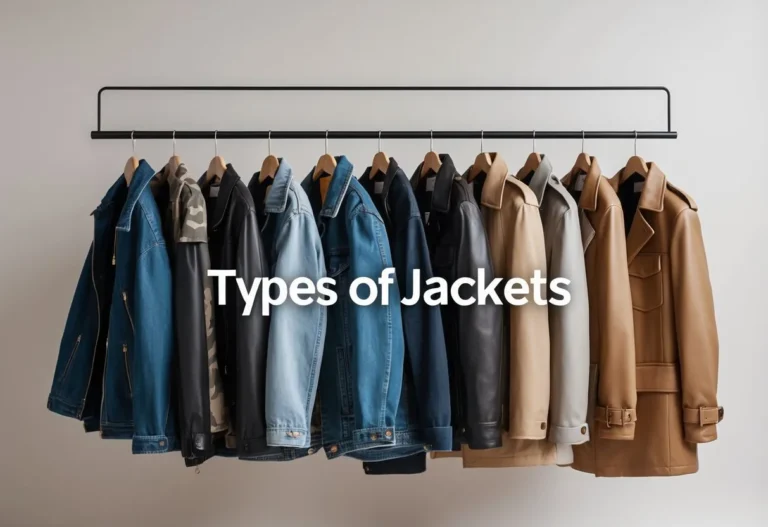Sustainable Packaging for Clothing:Guide to Eco Materials
Sustainable packaging for clothing is an essential step for brands wanting to reduce environmental impact while maintaining product quality. It replaces traditional plastic-based materials with options that are recyclable, biodegradable, or compostable, helping to cut down waste and pollution. This shift supports a cleaner planet and meets growing consumer demand for eco-friendly products.

Beyond protecting apparel during shipping and storage, sustainable packaging can also enhance brand image by offering a thoughtful and memorable experience. Companies can use materials like recycled paper, compostable bags, and plant-based inks to balance durability with environmental care. This approach shows a commitment to both quality and responsibility.
As the fashion industry faces increasing scrutiny over waste, adopting sustainable packaging becomes more than a trend—it’s a necessary move. Brands who embrace these solutions reduce their carbon footprint and stand out in a crowded market by aligning with values that matter to today’s consumers.
Key Takeways
- Sustainable packaging reduces waste and pollution in clothing shipments.
- Eco-friendly materials protect garments while supporting brand values.
- Adopting green packaging boosts a brand’s market appeal and responsibility.
Key Principles of Sustainable Packaging for Clothing

Sustainable packaging for clothing focuses on reducing waste, lowering environmental impact, and meeting the demands of eco-conscious shoppers. It involves choosing materials and designs that minimize carbon footprint while maintaining product protection and brand identity.
Definition and Core Concepts
Sustainable packaging means using materials and methods that limit harm to the environment. This includes recyclable, biodegradable, and compostable materials. The core idea is to reduce waste and pollution throughout the packaging’s lifecycle.
Key concepts include:
- Material choice: Using recycled or renewable resources.
- Minimalism: Reducing excess packaging to lower resource use.
- Reusability: Designing packaging that customers can reuse.
- Circularity: Ensuring materials return to the supply chain instead of landfills.
These ideas aim to create packaging that serves its purpose without causing lasting environmental damage.
Importance for Apparel Brands
Apparel brands find sustainable packaging essential for multiple reasons. It helps reduce costs by using less material or cheaper, eco-friendly alternatives. Brands can also attract eco-conscious shoppers who prefer sustainable products.
Packaging is more than protection; it communicates a brand’s values clearly. Using eco-friendly packaging builds trust and loyalty with customers who care about sustainability.
Brands that adopt these practices also prepare for future regulations aimed at reducing packaging waste.
Environmental Impact and Consumer Expectations
Clothing packaging has a significant impact on carbon footprint and pollution. Sustainable packaging lowers emissions by using less plastic and fossil fuels. It reduces landfill waste through compostable or recyclable materials.
Consumers increasingly expect brands to act responsibly. They look for clear labels showing eco-friendly practices and prefer brands aligned with their values.
Brands that meet these expectations can improve sales and support environmental goals. Meeting these demands requires constant innovation and transparency in packaging choices.
Eco-Friendly Materials Used in Clothing Packaging

Sustainable clothing packaging relies on materials that reduce waste and environmental harm. These materials include recycled paper products, biodegradable options, and plastics made from recycled content. Many also focus on reusability and easy recycling to extend the packaging’s life and lower its footprint.
Recycled Cardboard and Paper

Recycled cardboard is a popular choice for clothing packaging, especially for shipping boxes and kraft bags. It is made from post-consumer waste, meaning it reuses paper from everyday sources like old boxes and newspapers. This limits the need for virgin materials and cuts down on landfill waste.
Paper-based packaging, such as kraft bags, is also valued for being lightweight and strong. Kraft bags made from recycled paper offer durable protection while being fully recyclable. Some designs use minimal ink and avoid plastic coatings to keep the packaging simple and easy to process through recycling systems.
Brands often use recycled cardboard to create eco-friendly shipping boxes with custom prints. These boxes protect clothes during transport and give companies a sustainable branding option.
Biodegradable and Compostable Materials
Biodegradable and compostable packaging breaks down naturally in the environment over time. Compostable mailers and bags are made from plant-based materials like cornstarch or cellulose, designed to degrade in home or industrial composting conditions.
Such materials avoid plastic pollution because they do not persist in landfills or oceans. Compostable bags often replace traditional poly mailers and garment bags. They offer similar protection but without lasting environmental damage.
This packaging type may include biodegradable films that are transparent or opaque. Many are designed with customer convenience in mind, featuring resealable zippers or tear-offs while remaining certified compostable. Compostable options are important for online clothing retailers looking to reduce plastic waste.
Recycled Plastics and Poly Mailers
Recycled plastics, often made from recycled PET (polyethylene terephthalate), provide another route to more sustainable packaging. These materials transform post-consumer plastic bottles into durable film for poly mailers and bags used to protect garments in shipping.
Using recycled plastics reduces the demand for new plastic production and diverts waste from landfills. Although recyclable, these poly mailers rarely break down naturally like compostable options, so their recyclability is a key factor.
Many brands customize poly mailers with recycled content and offer various sizes to fit garment types more efficiently. Some mailers also combine recycled materials with design features such as secure adhesive strips and ventilation holes to improve usability while maintaining eco-friendly goals.
Reusable and Recyclable Packaging Solutions
Reusable packaging offers a long-term alternative by encouraging customers to return or repurpose containers. Examples include fabric wraps, sturdy tote bags, or reinforced boxes designed for multiple uses. This approach lowers single-use waste and supports brand sustainability.
Recyclable packaging means materials can be processed and reused after use without losing quality. Both recycled cardboard and certain plastics fall into this group if properly sorted. Clear instructions on packaging improve recycling rates by guiding consumers.
Brands often use recyclable kraft bags or boxes that balance protection with environmental responsibility. This method aligns with waste reduction goals and appeals to eco-conscious shoppers who want durable, responsible packaging options.
Popular Sustainable Packaging Formats for Apparel

Sustainable packaging for clothing uses specific materials and formats to reduce waste and environmental impact. These choices balance protection, reusability, and biodegradability while supporting brand image. Common options include boxes made from recycled materials, biodegradable plastic alternatives, and paper-based bags.
Mailer Boxes and Shipping Boxes
Mailer boxes and shipping boxes are essential for protecting apparel during transit. Many sustainable boxes are made from recycled cardboard, often containing 70% or more recycled content. These boxes are lightweight, recyclable, and sometimes designed to be reused multiple times to extend their lifecycle.
Custom sizing is a key feature. It helps reduce the amount of extra packaging material and prevents damage by fitting the clothing more securely. Brands can also choose minimal printing or plant-based inks to keep the environmental footprint low.
Sustainable shipping boxes support a cleaner unboxing experience while maintaining strength. Proper recycling instructions can encourage customers to reuse or recycle the boxes, further lowering waste.
Poly Bags and Compostable Bags
Poly bags are commonly used to protect garments inside boxes, but traditional plastic creates environmental issues. Compostable bags offer a better solution. They are made from plant-based or biodegradable materials that break down within a few months in compost environments.
These bags often contain no plastic, combining recycled fibers or organic materials that make disposal easier and eco-friendly. Compostable garment bags protect clothes but degrade without leaving harmful residues.
Brands committed to zero-plastic packaging often use compostable mailer bags alongside organic cotton or recycled tags. This reduces plastic waste and supports a completely sustainable supply chain.
Kraft Bags and Paper Bags
Kraft bags and paper bags are popular due to their simplicity and recyclability. Kraft paper is durable and made from wood pulp, often sourced from sustainable forests. Many Kraft bags use unbleached paper and post-consumer recycled materials.
These bags are strong enough to hold various clothing items and can be reused multiple times. They are often paired with paper-based tapes and minimal plastic-free closures.
Kraft bags support an eco-friendly brand image by offering a natural, earthy look. They are easy to recycle and compost, providing a low-impact packaging option that fits many sustainable apparel businesses.
Enhancing Brand Experience with Sustainable Packaging

Sustainable packaging can strengthen a brand’s identity while offering customers a mindful unboxing experience. Thoughtful design choices, from custom packaging to messaging, show dedication to quality and eco-friendly values. These elements together create a lasting impression that aligns with consumer expectations.
Custom Clothing Packaging Design
Custom packaging helps brands stand out and reflect their values through design. It usually involves using recycled or biodegradable materials that protect clothing during shipping. The packaging shape, size, and graphics are crafted to match the brand’s style, making the opening moment special.
Brands often choose compact, minimalistic boxes to reduce waste while maintaining durability. Adding features like easy-to-open seals and reusable packaging options can improve customer satisfaction. Using inks and dyes that are non-toxic or water-based further supports sustainability while keeping the presentation clean and appealing.
Tissue Paper and Decorative Elements
Tissue paper plays a key role in elevating packaging without increasing environmental impact. Brands use recycled or biodegradable tissue paper to wrap clothing gently, protecting it and enhancing the unboxing feel. Custom prints or subtle branding on tissue paper add a personal touch.
Decorative elements should be minimal to avoid waste. Options such as natural twine or paper ribbons replace plastic ties. These details keep the package elegant and aligned with eco-friendly goals, helping customers feel the brand’s care in every step of the experience.
Hang Tags and Messaging
Hang tags offer a direct way to communicate the brand’s sustainability story. Tags made from recycled paper or seed paper provide useful information without adding unnecessary waste. Clear, concise messaging explains the materials used, care instructions, and the brand’s environmental commitments.
Incorporating QR codes on tags can connect customers to more detailed content like the product’s origin or recycling guides. Well-designed hang tags strengthen trust and encourage customers to support sustainable choices while reinforcing the brand identity in a subtle but effective way.
Best Practices for Apparel Brands Implementing Eco Packaging

Apparel brands must consider the full impact of their packaging choices. Key factors include how packaging materials break down or are reused, the balance between cost and durability, and how materials are sourced and managed in the supply chain.
Lifecycle and End-of-Life Considerations
Brands should use materials that are recyclable or compostable to reduce environmental impact. Packaging made from recycled content lowers the need for virgin resources. It is important to design packaging that easily separates into recyclable parts to avoid contamination.
Clear labeling on packaging guides consumers on proper disposal. Some brands adopt reusable packaging options, encouraging customers to return or reuse boxes or bags. This supports a circular system and reduces waste sent to landfills.
Water-based inks on packaging are preferable because they minimize toxic runoff during recycling. Overall, prioritizing eco-friendly materials and end-of-life solutions helps apparel companies lessen their packaging footprint.
Cost, Durability, and Functionality
Sustainable packaging should not compromise the product’s protection or increase costs unnecessarily. Durable materials made from recycled paper or cardboard can be both sturdy and lightweight, lowering shipping costs.
Minimalist packaging design reduces material use while still maintaining functionality. This often means fewer layers or simple closures that still shield garments during transit.
Brands must balance eco goals with cost efficiency to stay competitive. Packaging that is recyclable but weak may increase product damage and returns. Choosing materials like recycled cardboard and compostable plastics can meet performance needs while supporting sustainability goals.
Supply Chain and Sourcing
Responsible sourcing is essential for sustainable packaging. Brands should partner with suppliers that provide certified recycled materials or use agricultural waste as feedstock.
A transparent supply chain helps track material origins and verifies environmental claims. This assists in meeting regulations and achieving corporate sustainability targets.
Collaborating with innovative packaging companies allows apparel brands to access new sustainable materials, like biodegradable films or reusable packaging systems. These partnerships can improve product quality and reduce the overall carbon footprint of packaging.
Managing logistics carefully ensures minimal waste during production and shipping, further optimizing sustainability efforts.
Trends and Innovations in Sustainable Clothing Packaging

Sustainable clothing packaging is evolving rapidly with new materials and approaches that reduce waste and environmental impact. This shift addresses both the demands of eco-conscious shoppers and upcoming regulations targeting plastic and waste reduction. Innovations focus on practical, eco-friendly solutions while maintaining a high-quality consumer experience.
Emerging Materials and Technologies
Biodegradable materials are at the forefront of packaging innovation. These include organic fabrics like cotton and hemp, as well as advanced biomaterials that break down naturally. Brands are moving away from traditional plastics and using renewable resources like cornstarch, seaweed, and mushroom-based materials. These options reduce landfill waste and lower carbon footprints.
Technologies such as smart packaging are also gaining traction. Features like QR codes help track the lifecycle of packaging, encouraging reuse and recycling. Packaging that signals freshness or alerts about handling conditions improves product longevity. These tech advancements combine sustainability with consumer convenience.
Future Consumer and Regulatory Trends
Eco-conscious shoppers are prioritizing packaging that aligns with their values. They prefer minimal, reusable, or recyclable options, pushing brands to simplify designs and reduce unnecessary materials. Packaging that clearly shows environmental benefits can build loyalty and differentiate brands.
Regulations on plastic use and waste disposal are tightening globally. Many governments are introducing bans on single-use plastics and incentives for circular packaging systems. This creates pressure for brands to adopt reusable and compostable packaging. Businesses that respond early will avoid compliance risks and gain a competitive edge in the marketplace.
Frequently Asked Questions
Sustainable packaging in fashion involves choosing materials that reduce waste and environmental harm. It also requires smart strategies for costs, shipping, and brand identity. Certifications help ensure packaging meets eco-friendly standards.
What materials are recommended for eco-friendly packaging in the fashion industry?
Materials like recycled polyester, organic cotton, bamboo, and hemp are common for labels and trims. For packaging, recycled paper, FSC-certified cardboard, compostable bags, and water-soluble packaging are widely used.
These materials help reduce plastic waste and are often biodegradable or recyclable, lowering a brand’s environmental footprint.
How can small clothing businesses implement sustainable packaging practices?
Small brands can start by switching to recycled paper hang tags and compostable polybags. Using soy-based inks and minimal packaging also reduces impact.
Applying simple labels that state sustainability efforts builds transparency without high costs. Small steps can still have meaningful effects.
What are the most cost-effective sustainable packaging options for bulk clothing orders?
Recycled paper tags and FSC-certified cardboard boxes offer low-cost eco choices for large orders. Compostable bags made from plant-based materials balance sustainability and price.
Buying in bulk often lowers costs and allows businesses to invest in branded, eco-friendly packaging without overspending.
Which sustainable packaging solutions are best for minimizing shipping impact for garments?
Lightweight, biodegradable polybags and recyclable cardboard boxes reduce shipping weight and waste. Using minimalist paper sleeves, such as belly bands, cuts packaging size and material use.
These solutions lower fuel consumption and waste during transport, supporting more sustainable delivery.
How can clothing brands personalize sustainable packaging to enhance brand identity?
Brands can add QR codes on hang tags linking to their eco efforts or use organic cotton labels with custom designs. Printed messages like “Made from 100% Recycled Materials” reinforce commitment.
A well-designed eco-friendly package acts as a branding tool, making packaging part of the customer experience.
What certifications should be looked for when sourcing sustainable packaging for clothing?
Look for FSC certification for paper and cardboard to ensure responsible forest sourcing. Compostable certifications verify bags meet biodegradability standards.
Certifications provide assurance that materials meet environmental regulations and support genuine sustainability claims.







